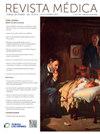评估骨密度和矿物质含量的新方法
IF 0.4
Q4 MEDICINE, GENERAL & INTERNAL
引用次数: 0
摘要
本文讨论了利用放射骨密度(DXA)对骨密度(BMD)进行常规评估的新技术,目的是评估骨质量和估计骨质疏松性骨折的风险。这些方法允许对骨骼健康进行更准确的临床评估,早期和选择性地开始靶向治疗,并监测其进展。作为标准DXA研究的补充,经过充分验证的10年骨折风险评估工具(FRAX)和基于结构分析的骨小梁评分(TBS)都是可用的。FRAX纳入了成熟的临床风险因素。髋关节结构分析(HSA)虽然可用,但尚未得到临床验证。DXA具有暴露于电离辐射(尽管非常低)、分析骨面积而不是体积以及无法区分皮质骨和小梁骨等局限性,除此之外,其他成像方式包括定量放射技术,如定量计算机断层扫描(QCT)和高分辨率外周定量计算机断层扫描(HR-pQCT),这些技术也涉及辐射暴露(剂量较高)。无辐射技术,如定量超声(QUS),射频超声多光谱(REMS)和定量磁共振成像(QMRI)也可用。后一种方法在不同程度上提供了三维或体积评估、高分辨率成像以及区分皮质骨和小梁骨的能力,从而提高了诊断特异性。这些新技术的主要局限性包括它们的高成本,有限的可用性,在某些情况下,缺乏大规模人群研究的临床验证。将人工智能集成到这些技术中,有望彻底改变图像分析和解释,以及诊断过程的自动化。本文章由计算机程序翻译,如有差异,请以英文原文为准。
Nuevos métodos de evaluación de la densidad y contenido mineral óseo
New techniques are discussed to complement the conventional assessment of bone mineral density (BMD) performed using radiological bone densitometry (DXA), with the aim of evaluating bone quality and estimating the risk of osteoporotic fracture. These approaches allow for a more accurate clinical assessment of bone health, early and selective initiation of targeted therapy, and monitorization of its progression.
Complementary to standard DXA studies and fully validated, the 10-year fracture risk estimation tool (FRAX), which incorporates well-established clinical risk factors, and the trabecular bone score (TBS), derived from texture analysis, are available. Hip structural analysis (HSA), although available, has not yet been clinically validated.
Beyond DXA, which has limitations such as exposure to ionizing radiation (albeit very low), the analysis of bone area rather than volume, and the inability to differentiate cortical from trabecular bone, other imaging modalities include quantitative radiological techniques such as quantitative computed tomography (QCT) and high-resolution peripheral quantitative computed tomography (HR-pQCT), which also involve radiation exposure (with higher doses). Radiaton-free techniques like quantitative ultrasound (QUS), radiofrequency echographic multi-spectrometry (REMS), and quantitative magnetic resonance imaging (QMRI) are also available. These latter methods, to varying extents, provide three-dimensional or volumetric assessments, high-resolution imaging, and the ability to distinguish between cortical and trabecular bone, thereby increasing diagnostic specificity.
The main limitations of these newer technologies include their high cost, limited availability, and, in some cases, a lack of clinical validation in large population studies. The integration of artificial intelligence into these techniques is expected to revolutionize image analysis and interpretation, as well as the automation of diagnostic processes.
求助全文
通过发布文献求助,成功后即可免费获取论文全文。
去求助
来源期刊

Revista Medica Clinica Las Condes
MEDICINE, GENERAL & INTERNAL-
CiteScore
0.80
自引率
0.00%
发文量
65
审稿时长
81 days
 求助内容:
求助内容: 应助结果提醒方式:
应助结果提醒方式:


